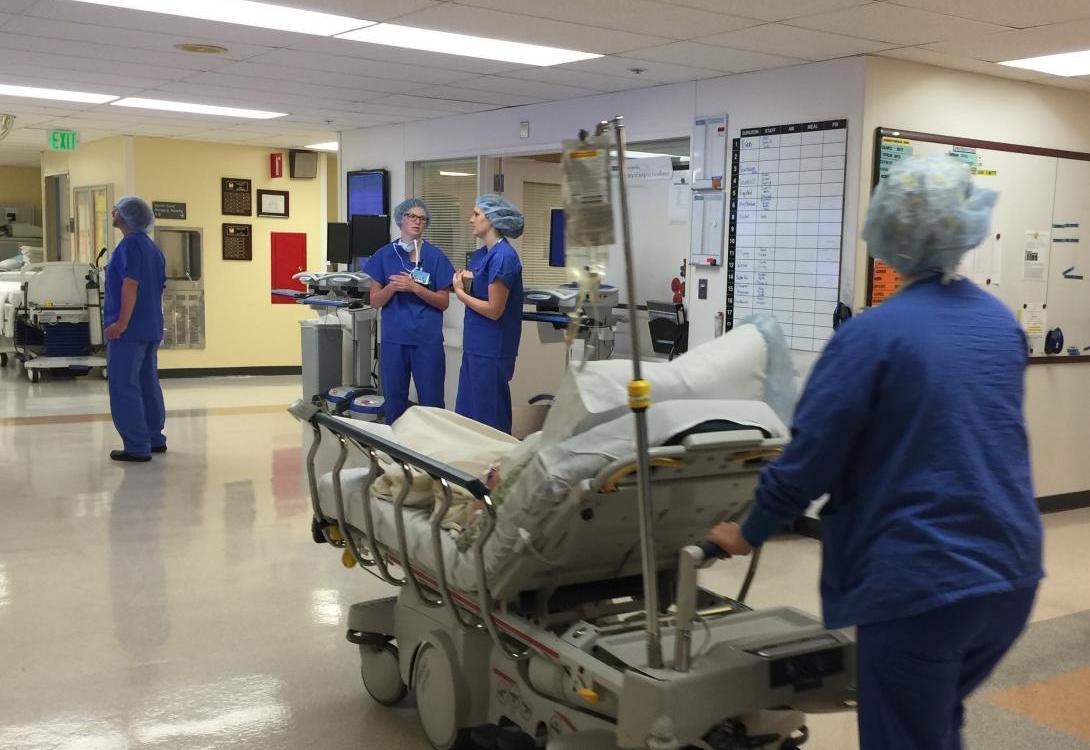
This article is republished from Oregon Public Broadcasting.
Oregon Gov. Kate Brown has issued an executive order to help hospitals combat rising cases of pediatric respiratory viruses, including respiratory syncytial virus — commonly known as RSV. The executive order will give hospitals the flexibility to staff beds for children, and allow them to draw on a pool of medical volunteer nurses and doctors, among other steps.
But the Oregon Nurses Association expressed disappointment that the state and its health agency did not intervene sooner to mitigate the emergency.
“The RSV crisis did not happen suddenly. In fact, it has been building over the past weeks and months. Yet we have not seen robust public health interventions that would have mitigated this crisis and prevented more Oregonians from getting sick,” the Association wrote in a statement responding to the executive order.
RSV is a common respiratory virus that spreads through coughing and sneezing. For most children, RSV produces mild illness, similar to the common cold. However, young children are especially susceptible to RSV. And children under the age of two are at increased risk of severe disease.
Since the onset of Oregon’s RSV season in late October, the statewide pediatric hospitalization rate has more than tripled, according to Governor Brown’s office, and is likely to exceed its previously recorded weekly hospitalization rate imminently. Oregon Health Authority could not be immediately reached for updated numbers since the announcement about the executive order came just before 5 p.m. on Monday.
Last week it was reported that 4 out of 40 statewide pediatric ICU beds were available, and 90% were occupied.
In Oregon, there are only three hospitals with a pediatric ICU — OHSU’s Doernbecher Children’s Hospital and Randall Children’s Hospital at Legacy Emanuel — and Providence St. Vincent’s Hospital.
“Like other hospitals in the region and across the country, OHSU Doernbecher Children’s Hospital is currently admitting a high number of sick patients. Illnesses have hit our communities hard — and this comes on top of extreme health care staffing challenges which were exacerbated by the pandemic,” said Dr. Dana A. Braner, physician-in-chief at Doernbecher. “We expect this spike in illness to continue in the coming months.” The state nurses association said that public health campaigns focused on parents and schools asking them to keep children home if they are sick or show signs of illness, and other actions, such as encouraging mask use, handwashing, and practicing social distancing could have helped reduce the impact of this surge in RSV cases.
This dramatic increase in RSV cases comes at a time when Oregon’s hospitals are already facing a nurse staffing crisis. ONA called on hospitals to incentivize nurses who agree to work the extra shifts that are needed to meet during this crisis and to relieve nurses of extra duties through additional ancillary staff. They also called on hospitals to delay elective surgeries.
The Oregon Health Authority encourages all individuals at increased risk of severe disease, and their caregivers, to take steps to prevent RSV and other respiratory infections this flu season.
Signs of RSV include runny nose, decrease in appetite, coughing, sneezing, fever, wheezing and labored breathing. Symptoms usually appear in stages. Young infants with RSV may only show irritability, decreased activity and breathing difficulties, according to the CDC.
Because RSV largely stopped spreading during the pandemic, health officials said there’s likely a larger pool of kids being exposed to it for the first time.
There is no vaccine for RSV. People who want to avoid getting, or spreading it, should consider wearing a mask if they’re in a crowded indoor environment. Hand washing is a more effective tool against RSV transmission than it is for COVID-19. People are advised to wear a mask if they have a runny nose to keep others from getting sick.
And if you have an infant under 6 months or a young child with underlying conditions, consider limiting the number of visitors in your household during RSV season.